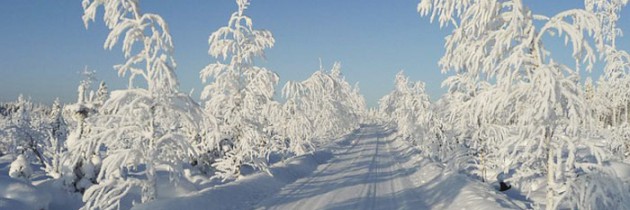Significantly Reduce Your Risk of Frostbite

As I write this it’s -6 degree Fahrenheit with temperatures dropping to -20 tonight. Add the windchill and it’s going to feel more like -30. Even as a lifelong “Mainer” and someone who is comfortable outdoors in cold temperatures, this is cold! When temperatures dip below zero, frostbite becomes a major concern and it’s important to know how to reduce your risk and what to do if you suspect you’re developing frostbite.
What is frostbite?
Frostbite is a medical condition caused when skin or other tissue is damaged due to freezing. Exposed skin, fingers, toes, nose and ears are all highly susceptible to frostbite in cold conditions. If a case of frostbite is detected early, is superficial and appropriate treatment is applied skin can recover fully. However if frostbite is more extensive and has affected deeper tissues it can result in permanent and irreversible damage.
How does frostbite happen?
The human body is amazing and in cold conditions it diverts blood from your extremities to your core to protect vital organs from freezing. While this is an excellent survival measure it leaves your fingers and toes more vulnerable to frostbite.
The other way you can get frostbite is to come in contact with something cold like ice or metal. Remember that scene from “A Christmas Story” where the boy gets his tongue stuck to the flag pole? Ouch! Grabbing onto a metal snow shovel or a ski pole with your bare hands in subzero temperatures would not be a wise idea either.
When does it happen?
Temperature and wind work together to decrease the amount of time it takes for exposed skin to become frostbitten. As the wind speed increases it whisks body heat away more rapidly, shortening the amount of time skin can be exposed. In extreme cases, just a few minutes of exposure can be very dangerous.
How can you tell if you’re getting frostbite?
There are some early warning signs you can look out for including:
- numbness and tingling or a prickly sensation
- pale or greyish-yellow skin
- hard or waxy-looking skin
- muscle stiffness or blistering
How do you treat frostbite?
According to webmd, if your skin is turning white, hard or black you should call 911 and seek medical attention right away. While you’re waiting for medical attention the following measures are also recommended:
Do
- Do restore warmth, gently and carefully.
- Do remove wet clothing
- Do use warm water to help restore warmth (do not use HOT water)
In addition to the previous recommendations webmd cautions that you should avoid the following:
Do Not
- Do not allow a person with frostbite on their toes to walk on them
- Do not rewarm skin until you can sustain warmth. (warming and then re-exposing skin to cold can cause even more damage)
- Do not rub or massage the area
How do you avoid frostbite?
The easiest way to avoid frostbite is to avoid exposing skin for any extended period of time in extremely cold weather. Just stay inside if you can. However, if you do need to venture outside be sure to wear the proper clothing. If you’re going to be doing something strenuous like shoveling, hiking or skiing start with a base layer that will wick sweat and moisture away from your body so you stay dry. Then use a mid layer, like fleece or wool for warmth, followed by a breathable outer-shell that works to protect you from the wind while preventing you from overheating.
For your hands use mittens. Mittens are warmer than gloves because keeping all of your fingers in the same compartment together generates body heat. I like to layer my mittens too with a fleece inner mitt covered by a waterproof and breathable outer-shell.
A balaclava or neoprene mask is an excellent way to protect your face and nose. Because the vast majority of your body heat escapes through your head, a warm hat that covers your ears is also a critical piece of cold weather gear. Finally, make sure you have good heavy socks and boots that aren’t too tight, are insulated and will keep you dry. If you are venturing out, even for a day trip, bring extra socks, mittens and hat. I even bring an extra base layer on most of my winter outings so I have another dry set should I need to spend more time out in the elements than I had originally planned.
In extreme cold take precautions to avoid frostbite by limiting exposure and wearing the appropriate clothing to stay warm and dry. If you do detect early warning signs of frostbite take steps to gently rewarm the affected area and seek medical attention ASAP. It’s possible to enjoy the outdoors safely even when temperatures dip below zero if you take the appropriate steps to significantly reduce your risk of frostbite.
Stay warm,
Steve
Steve Stearns is an avid outdoor enthusiast and host of the Outside Health and Fitness podcast. He shares practical advice, resources and interviews experts from the world of fitness, nutrition and health. His goal is to help others discover new, fun and effective ways to be naturally fit, healthy and happy.
Facebook:www.outsidehealthandfitness.com/facebook
twitter: @sws0926
Google:www.google.com/+stevenstearns





